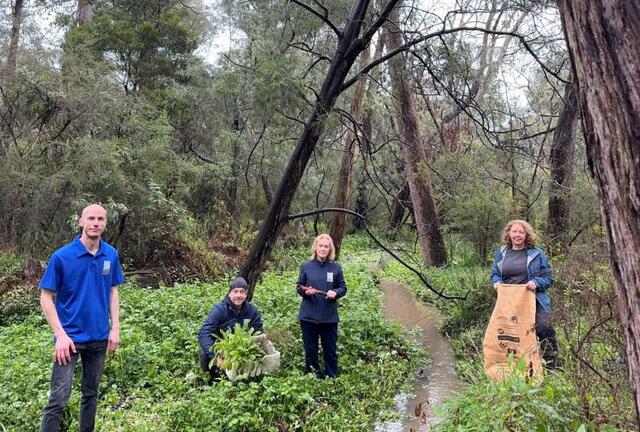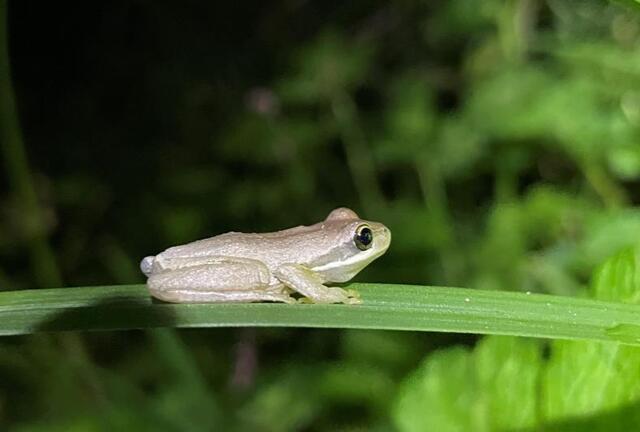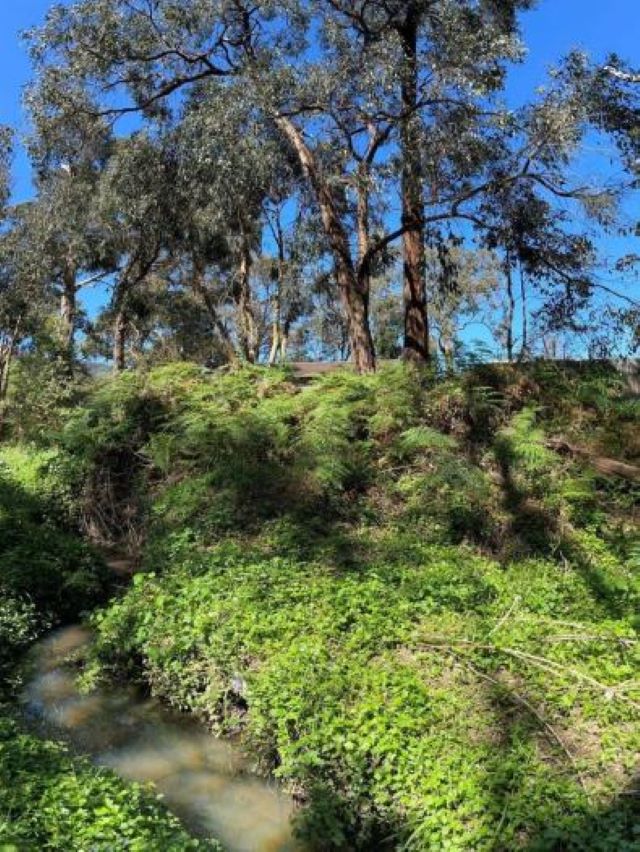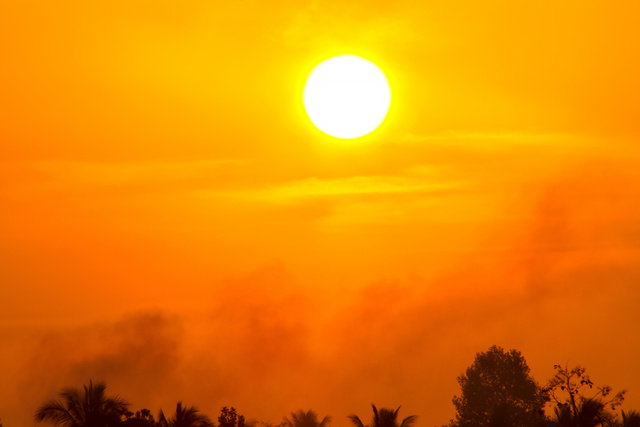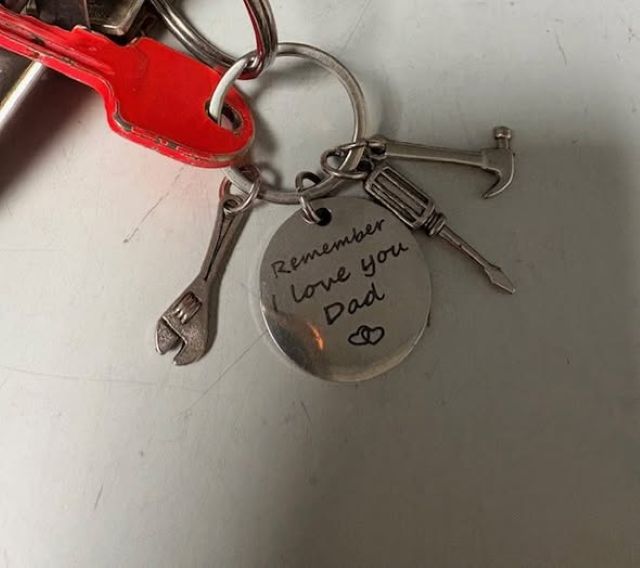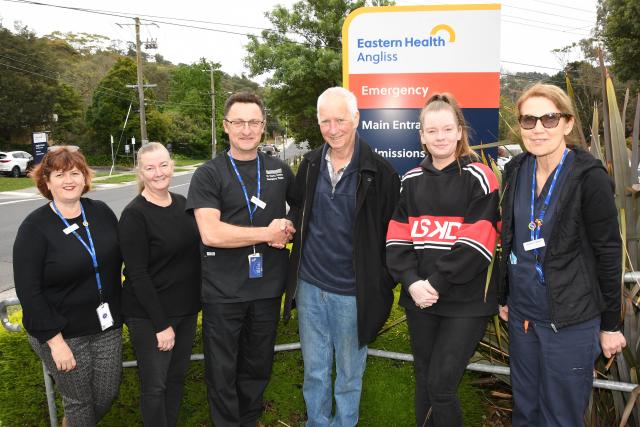A volunteer environment conservation group has seen to a landmark renaming of a cherished creek to give community fresh connection to the vital waterway in the Knox area.
Local Wurundjeri Elders have worked with Friends of Koolunga Native Reserve and Melbourne Water to give a new name to a creek in Ferntree Gully.
A consultation process between Melbourne Water and Wurundjeri colleagues explored potential Indigenous language names that could describe the waterway and eventually naming the creek ‘Wayut’.
“Language is inextricably linked with culture and country,” Wurundjeri Elder Aunty Gail said.
“Our language helps describe our connection to the environment and the landscapes within it in a way that strengthens these links to our country and to each other.”
The word ‘wayut’ was chosen from the Woiwurrung language and wayut are the medium-sized eucalypts in the area.
They have a thick, fibrous bark that typically grow ten-to-40 metres in height and provide an important canopy for wildlife habitat along the creek line.
Wayut Creek is a valuable wildlife connection between the Dandenong Ranges National Park and the remaining pockets of native vegetation along its path through the middle of the City of Knox.
President of Friends of Koolunga Native Reserve Rowan Jennion their group were really pleased when the Wurundjeri provided a name in the Woiwurrung language that also reflected the local native vegetation and an important tree they use for revegetation.
”The name is a great way to connect community to traditional culture and language and to their local environment,” he said.
Fellow group member Kathleen Loxston said that the name change is something they have been waiting for.
“We’re really excited – it has been a really great thing,” she said.
Aunty Gail said they appreciated the opportunity provided by Melbourne Water to help all Australians connect with place by understanding the deep history of these places.
Mr Jennion said the group are incredibly grateful for their main contact at Melbourne Water, Jared Polkinghorne who navigated the formal steps and stuck with them throughout the process.
“We’ve walked along the creek with Jared so he’s seen the water quality issues firsthand and understood how important the creek is for local wildlife,” he said.
For almost 30 years the the Friends of Koolunga Native Reserve have volunteered monthly to help restore and maintain local biodiversity, including supporting the creek line with weed management, revegetation, rubbish removal, and wildlife monitoring.
Formed from a series of springs in the Dandenong Ranges, Wayut Creek connects downstream with Blind Creek at Dobsons Park which flows into Dandenong Creek., a 53 kilometre long tributary of the much shorter Patterson River.
This ten metre wide artificial channel empties into Port Phillip Bay.
Mr Jennion said that restoring the waterway back to a creek recognises its importance for the native wildlife that live and breed in it, and rely on it to survive in a hot summer.
“We all enjoy going for a walk and seeing native wildlife but we need to look after their habitat or more wildlife will disappear,” he said.
“The headwaters of our local creeks now include our home driveway and roof, and street stormwater drains.”
“Constant threats come from solid waste as well as invisible pollutants like chemicals, detergents, fertiliser nutrients and heavy metals.”
The wildlife native to Wayut Creek includes brown tree and banjo frogs and rosellas that drink and bathe in the stream.
Yabbies and crays burrow in the banks while pacific black ducks, Australian wood ducks and chestnut teals breed nearby who all feed and live on the water.
Mountain galaxias fish and short-finned eels seek refuge under its native aquatic vegetation and fishing spiders and invertebrates form the basis of a food chain that supports life in the creek.
Looking forward Mr Jennion said that there is a need for the design and function of stormwater to keep up with modern understanding of how development and our lifestyles impact these wildlife habitat corridors.
“There’s a number of design changes that local councils and VicRoads can build into their stormwater systems to filter and reduce the amount of pollutants ending up in our creeks,” he said.
“These include rain gardens, vegetated swales and gross pollutant traps”.
“This would also help the visual amenity of our community – I’d prefer to look at a rain garden with greenery on the side of the road instead of a cracked old concrete gutter.”
Melbourne Water suggests a number of ways residents can protect local creeks from pollution, such as washing cars on lawns instead of in driveways and streets, rinsing paint brushes and buckets away from drains and gutters, reporting burst water mains as soon as possible and carefully replacing car engine oil and coolant to prevent spills.
To find Wayut Creek, you can track its course through the middle of Koolunga Native Reserve, located off Forest Road, or a short walk from the railway line bike path to the end of St Elmo Avenue in Ferntree Gully.

